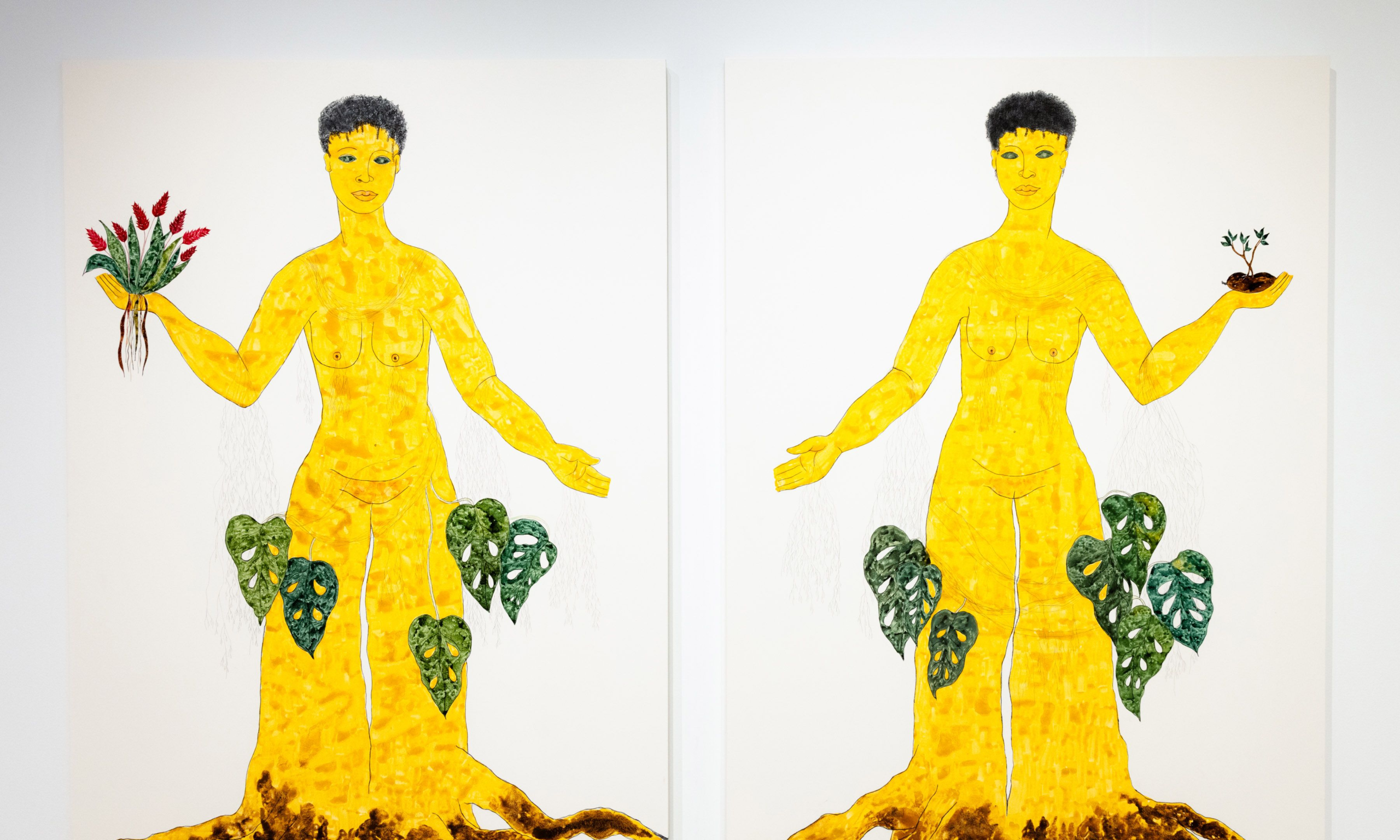Rosana Paulino, Gêmeas (from the Jatobás series) (2023), at Mendes Wood DM Steven Molina Contreras
Cecilia Alemani needs little introduction these days. The powerhouse curator has received wide praise for her role organising the public art programme for The High Line, while as artistic director of the Venice Biennale in 2022 she brought together the work of a record number of women artists.
We caught up with her at Frieze to find out what she is most excited about across the stands.
Rosana Paulino, Gêmeas (from the Jatobás series) (2023), Mendes Wood DM (pictured at top of page)
The Brazilian artist captures a moment of transformation in this pair of portraits—part of a series from which Alemani displayed smaller works in Venice—with plants and roots growing from the bodies of the female figures. “She’s not afraid of portraying the female body as a strong pillar of our community,” Alemani says. “They’re gorgeous.”
Pacita Abad, The Far Side of Apo Island (1989), Tina Kim Gallery
Pacita Abad, The Far Side of Apo Island (1989), at Tina Kim Gallery Steven Molina Contreras
Pacita Abad is having a moment, with her work currently the subject of a long-overdue retrospective at MoMA PS1. This monumental textile “is quite a surprising piece, because I often connect her to scenes of people”, Alemani says. But as with much of Abad’s practice, Alemani adds, “there is an interesting relationship with the quilting tradition”.
Pietro Roccasalva, La Sposa Occidentale (2024), Massimodecarlo
Pietro Roccasalva, La Sposa Occidentale (2024), at Massimodecarlo Steven Molina Contreras
The Italian artist often works in sculpture and installation, but he is also a talented painter who brings a “retro style into his figuration” while representing contemporary subject matter, Alemani says. “His works often look like Renaissance paintings; there is a Surrealist tendency going on within his practice—and a mysterious one, too.”
Julia Phillips, Opener (2018/22), Matthew Marks Gallery
Julia Phillips, Opener (2018/22), at Matthew Marks Gallery Steven Molina Contreras
Based between Berlin and Chicago, Julia Phillips creates sculptures that reference tools and other everyday objects with an unsettling, anthropomorphic twist. In this small work, Alemani says, “the object feels almost like an instrument of torture or a medical instrument, but then you see these splashes of pink that somehow bring the body back”.
Vivian Suter, various works, Proyectos Ultravioleta
Various works by Vivian Suter at Proyectos Ultravioleta Steven Molina Contreras
The Argentine Swiss painter Vivian Suter lives and works in the Guatemalan rainforest. “What’s special about her paintings is that she makes them in collaboration with nature,” Alemani says. “The canvases are always unstretched or unframed, and she takes them into the jungle—so sometimes you might see the stain of a fallen fruit or the rain.”
Alex Da Corte, Olive Oyl Light Switch (2024), GióMarconi
Alex Da Corte, Olive Oyl Light Switch (2024), at GióMarconi Steven Molina Contreras
Alex Da Corte made a splash at Frieze New York in 2016 with his giant inflatable baby sculpture—created as part of the Frieze Projects section that Alemani was organising—that floated above the fair’s entrance. This smaller piece, a lightbox cast in the form of cartoon character Olive Oyl, brings the curator back to an old Elvis Presley light switch (owned by someone she lived with), which she switched on every day. “It totally reminds me of this very Pop substrate of our culture.”
Charisse Pearlina Weston, The many instances where edge meets to wedge and unmoors (the after-being of collapse in riot time) (2024), Patron
Charisse Pearlina Weston, The many instances where edge meets to wedge and unmoors (the after-being of collapse in riot time) (2024), at Patron Steven Molina Contreras
Charisse Pearlina Weston, who is in this year’s Whitney Biennial and had a recent show at MoMA PS1, has a rich conceptual practice that combines photography, installation, poetry and more. Here, she has printed a photograph onto the skin of the glass object—subtly and intelligently translating, in the words of Alemani, “photography’s two-dimensionality into sculpture”.

